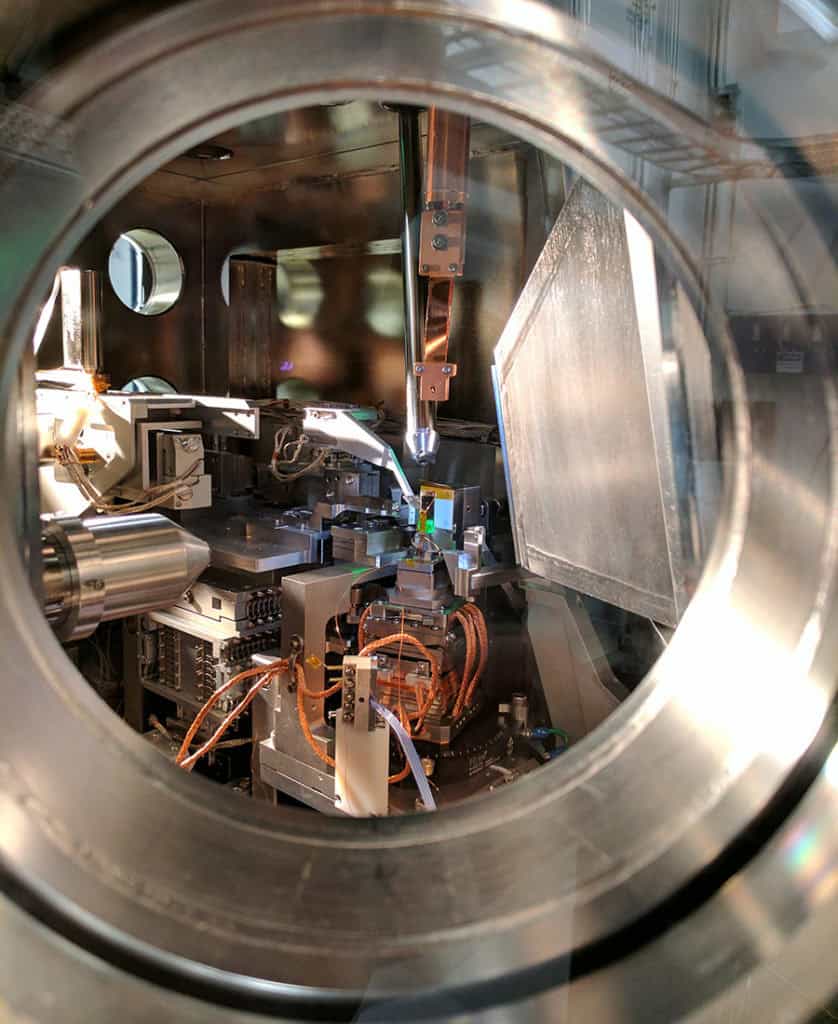
Cambridge researchers are working to solve one of technology’s biggest puzzles: how to build next-generation batteries that could power a green revolution.
Like many of us, when I wake up I reach for the phone on my bedside table and begin scrolling through Twitter, Instagram, email and news apps. I listen to streamed music as I get ready for work and podcasts during my commute. By the time I reach the office, my phone already needs a boost. It’s not even 9am.
It’s a modern miracle that we have computers in our pockets more powerful than those which supported the moon landings. But, despite the fact that the transistors inside our phones and laptops have been getting smaller and faster every year, the batteries that power them have not.
The key to making electronics portable – and powering a sea change in how we communicate and consume information – was the commercialisation of lithium-ion batteries by Sony in 1991. Lithium-ion batteries are rechargeable, so when the device is connected to a charger it restores the battery for another use.
While lithium-ion batteries have undeniable advantages, such as relatively high energy densities and long lifetimes in comparison with other batteries and means of energy storage, they can also overheat or even explode and are relatively expensive to produce. Additionally, their energy density is nowhere near that of petrol. This makes them unsuitable for widespread use in two major clean technologies: electric cars and grid-scale storage for solar power. A better battery could make all the difference. So what’s holding up progress?
Professor Clare Grey is one of the UK’s leading battery researchers and heads a large research group in Cambridge’s Department of Chemistry. Using methods such as NMR spectroscopy, her group studies materials that could be used in next-generation batteries, fuel cells and supercapacitors.
A better battery is one that can store a lot more energy or one that can charge much faster – ideally both. Grey’s group is developing a range of different next-generation batteries, including lithium-air batteries (which use oxidation of lithium and reduction of oxygen to induce a current), sodium batteries, magnesium batteries and redox flow batteries.
A working lithium-air battery, for example, would have a theoretical energy density ten times that of a lithium-ion battery, giving it potential applications in portable electronics, transportation and grid storage. However, although this high energy density would be comparable to that of petrol, the practical energy density achievable is noticeably lower and significant research challenges remain to be addressed.
While Grey works with industrial partners to improve the batteries going into electric cars today, she says the role of universities is to think about entirely new types of batteries, such as the ones she is developing in her lab.
“Universities need to be coming up with answers for ten to 15 years from now – we’re the ones who are best placed to innovate, think creatively and generate radical, new solutions,” she says. “We want to make sure that our work has an impact well beyond today’s batteries.”
In addition to developing entirely new types of batteries, a major strand of Grey’s research is the detection of faults. As part of her Professorship funded by the Royal Society, Grey is trying to find ways to locate faults in batteries before they happen.
“Can we detect indicators of faults in batteries before they go wrong? If we can find them, then we could potentially prevent batteries from exploding. In addition, we want to explore whether a car battery that’s reached the end of its life could have a second life on the grid, for example. If we could work out, in real time, what causes the battery to degrade, we could change the way we use the battery, ensuring it lasts longer,” she says. “The more we know about the state of health of a battery, the more valuable that battery becomes. Both strategies – increasing battery life and finding a second use – lead to cheaper batteries.”
Grey is also heavily involved with the Faraday Institution, the UK’s independent national battery research institute, funded by the government through its Industrial Strategy. She is leading one of four ‘fast start’ projects, with nine other university and ten industry partners, to examine how environmental and internal battery stresses (such as high temperatures, charging and discharging rates) damage electric car batteries over time.
“When you think about other electronic devices, you’re generally only thinking about one material, which is silicon,” says Dr. Siân Dutton at Cambridge’s Cavendish Laboratory in the Department of Physics, and who is also working on the Faraday Institution project. “But batteries are much more complex because you’ve got multiple materials to work with, plus all the packaging, and you’ve got to think about how all these components interact with each other and with whatever device you’re putting the battery into.”
Among other projects, Dutton’s research group is investigating the possibility of a battery electrolyte that is solid instead of liquid. One of the primary safety concerns with lithium-ion batteries is the formation of dendrites – spindly metal fibres that make a battery short-circuit, potentially causing the battery to catch fire or even explode.
“If the electrolyte is solid, however, you may still get dendrites, but the batteries are far less likely to explode,” she says. “It’s important for universities to look at unconventional battery materials like the ones we’re investigating. If everyone moves in the same direction, we won’t get the real change we need.”
The prospect of an electric car with a range of 1,000 miles, or an iPhone that charges in two minutes, or being able to use stored solar power after the sun goes down, may all be some years away. But, says Grey: “If we’re serious about switching to a low-carbon economy, we need to be thinking about how to solve these problems now. We’re continuing to push new materials and new methods because, without them, research fields stagnate.”





